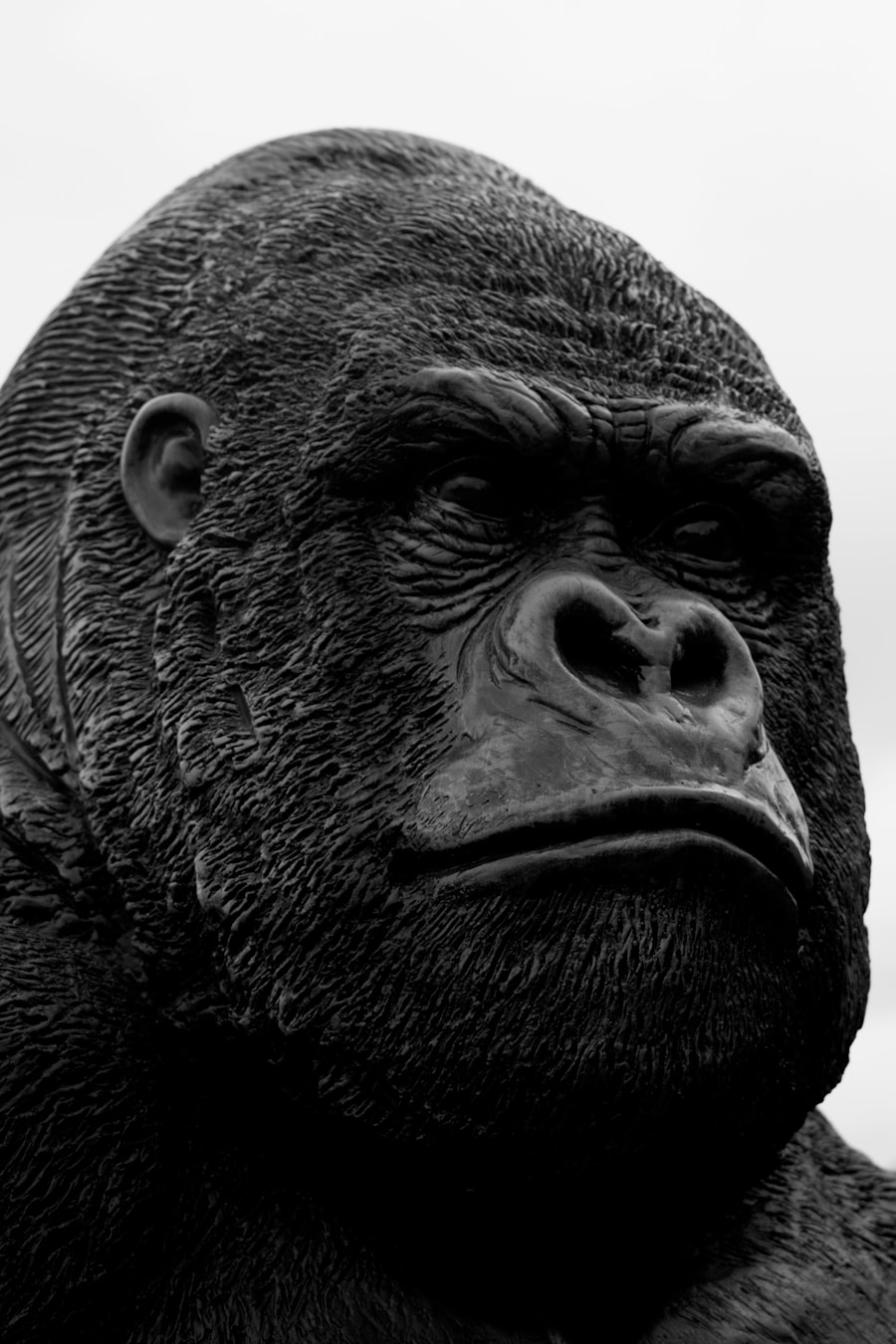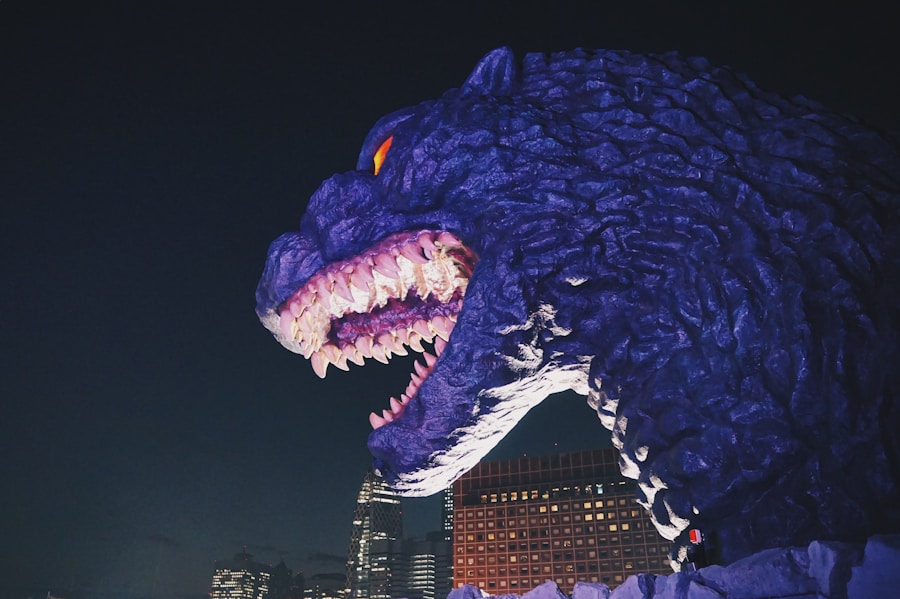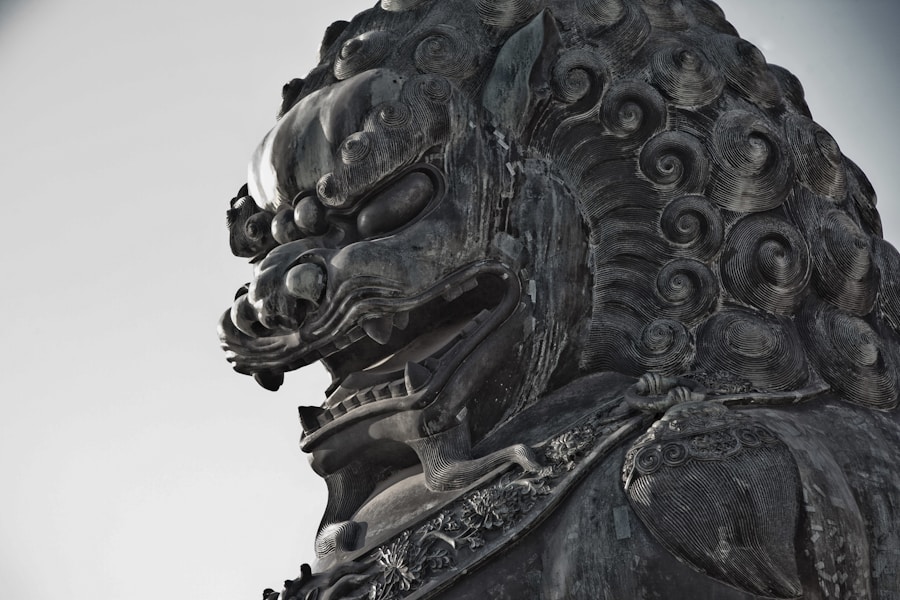The origins of Godzilla and King Kong are steeped in the rich tapestry of cinematic history, each monster emerging from distinct cultural backgrounds yet sharing a common thread of fascination with the colossal and the monstrous. King Kong first roared onto the silver screen in 1933, a product of American ingenuity and creativity. Created by Merian Cooper and Ernest Schoedsack, this giant ape captured the imagination of audiences with his tragic story, blending adventure, horror, and a poignant commentary on humanity’s relationship with nature.
The film’s groundbreaking special effects, particularly the use of stop-motion animation, set a new standard for visual storytelling, making King Kong an enduring icon in Western cinema. In contrast, Godzilla made his debut in 1954, emerging from the ashes of post-war Japan. Created by Ishirō Honda and produced by Toho Studios, Godzilla was born out of a national trauma, reflecting the fears and anxieties of a nation grappling with the aftermath of nuclear devastation.
The creature, a towering behemoth awakened by atomic testing, became a symbol of both destruction and resilience. Over the decades, Godzilla evolved from a terrifying force of nature into a more complex character, embodying themes of environmentalism and the consequences of human hubris. Together, these two titans represent not just monsters but cultural phenomena that have transcended their original narratives to become global icons.
Key Takeaways
- Godzilla and King Kong have a long history in film, dating back to the 1930s and 1950s respectively.
- Godzilla holds significant cultural importance in Japan, representing the country’s resilience and response to nuclear warfare.
- King Kong has had a major impact on Western pop culture, influencing films, literature, and even music.
- Both Godzilla and King Kong have evolved in film, from their original appearances to modern CGI adaptations.
- The fan base for Godzilla and King Kong is passionate and divided, with each monster having dedicated followers.
The Cultural Significance of Godzilla in Japan
Godzilla holds a unique place in Japanese culture, serving as a powerful metaphor for the nation’s struggles and triumphs. Emerging in the wake of World War II, Godzilla’s initial portrayal as a destructive force mirrored Japan’s own fears surrounding nuclear power and its devastating consequences. The monster’s rampage through cities can be seen as a reflection of the collective trauma experienced by a nation that had witnessed the horrors of war and atomic bombings.
This connection to real historical events has allowed Godzilla to resonate deeply with Japanese audiences, making him not just a monster but a symbol of survival and resilience. As time progressed, Godzilla’s narrative evolved to encompass broader themes such as environmentalism and the dangers of technological advancement. In films like “Godzilla vs.
Hedorah” (1971), the creature became an advocate for nature, fighting against pollution and ecological destruction. This shift in portrayal reflects Japan’s growing awareness of environmental issues and its commitment to addressing them. Godzilla’s cultural significance extends beyond entertainment; he serves as a reminder of the delicate balance between humanity and nature, urging audiences to consider the consequences of their actions on the world around them.
The Impact of King Kong in Western Pop Culture

King Kong’s impact on Western pop culture is profound and far-reaching, establishing him as one of cinema’s most recognizable figures. His story resonates with themes of beauty and the beast, love and loss, encapsulating the complexities of human emotion. The original 1933 film not only showcased groundbreaking special effects but also introduced audiences to a narrative that explored the darker sides of ambition and exploitation.
King Kong’s tragic fate—captured from his home and ultimately meeting his demise atop the Empire State Building—serves as a poignant commentary on humanity’s tendency to destroy what it does not understand. Over the decades, King Kong has been reimagined in various forms, from remakes to parodies, each iteration reflecting contemporary societal values and concerns. The 2005 remake by Peter Jackson brought a modern sensibility to the classic tale while retaining its core themes.
This enduring legacy has allowed King Kong to remain relevant in popular culture, inspiring countless adaptations in film, television, literature, and even video games. His presence in various media underscores not only his status as a cultural icon but also his ability to adapt to changing times while still evoking empathy from audiences.
The Evolution of Godzilla and King Kong in Film
| Film | Year Released | Box Office Revenue | IMDb Rating |
|---|---|---|---|
| King Kong | 1933 | 2.8 million | 7.9 |
| Godzilla | 1954 | 2.25 million | 7.6 |
| King Kong vs. Godzilla | 1962 | 12 million | 5.9 |
| Godzilla vs. Kong | 2021 | 467.9 million | 6.4 |
The evolution of Godzilla and King Kong in film is a fascinating journey that mirrors changes in societal attitudes and technological advancements. Godzilla’s cinematic journey began with his terrifying debut in “Gojira” (1954), where he was portrayed as an unstoppable force wreaking havoc on Tokyo. As the years progressed, Godzilla transformed from a symbol of destruction into a more nuanced character capable of heroism.
Films like “Godzilla: Final Wars” (2004) showcased him battling other monsters while also addressing contemporary issues such as climate change and nuclear power. Similarly, King Kong’s evolution reflects shifts in audience expectations and cultural narratives. From his initial portrayal as a monstrous yet sympathetic figure to his more recent incarnations that emphasize his strength and vulnerability, King Kong has adapted to remain relevant in an ever-changing cinematic landscape.
The 2017 film “Kong: Skull Island” reimagined him as a protector of his island home, further complicating his character beyond mere brute strength. Both monsters have undergone significant transformations over time, allowing them to resonate with new generations while retaining their core identities.
The Fan Base: Godzilla vs King Kong
The fan base surrounding Godzilla and King Kong is passionate and diverse, reflecting the deep emotional connections that audiences have formed with these iconic characters. Fans often engage in spirited debates about which monster reigns supreme—Godzilla or King Kong—each side presenting compelling arguments rooted in their respective histories and cultural significance. Godzilla enthusiasts often highlight his resilience and adaptability, pointing to his ability to evolve over decades while addressing pressing social issues.
In contrast, King Kong supporters celebrate his tragic narrative and emotional depth, emphasizing his role as a misunderstood creature caught between two worlds. This rivalry has fostered a vibrant community where fans share artwork, fan fiction, and theories about future films. Conventions dedicated to kaiju culture often feature panels discussing the intricacies of both characters’ mythologies, allowing fans to connect over their shared love for these titans.
The friendly competition between Godzilla and King Kong fans not only showcases their dedication but also highlights how these monsters have transcended their original narratives to become symbols of broader cultural conversations.
The East-West Showdown: Comparing the Monsters

The Cultural Significance of Godzilla
Godzilla embodies Japan’s post-war anxieties surrounding nuclear power and environmental degradation, serving as a cautionary tale about humanity’s hubris. His monstrous form represents both destruction and resilience, making him a complex character that resonates deeply with Japanese audiences.
The Cultural Significance of King Kong
In contrast, King Kong represents Western themes of ambition, exploitation, and the tragic consequences of human actions. His story is one of beauty intertwined with horror, reflecting societal attitudes toward nature and the unknown.
Differing Cinematic Portrayals and Cultural Narratives
The differences between these two titans extend beyond their origins; they also manifest in their cinematic portrayals. Godzilla is often depicted as an unstoppable force of nature, while King Kong is portrayed as a tragic hero struggling against his circumstances. This contrast highlights differing cultural narratives—Godzilla as a representation of collective trauma and environmental cautionary tales versus King Kong as an exploration of human emotion and ambition. Ultimately, both monsters serve as reflections of their respective cultures while also inviting audiences to engage with universal themes that transcend borders.
The Making of Godzilla vs King Kong
The making of “Godzilla vs. Kong” (2021) marked a significant moment in cinematic history, bringing together two legendary titans for an epic showdown that fans had long anticipated. Directed by Adam Wingard, this film was part of Legendary Entertainment’s MonsterVerse franchise, which sought to revitalize these iconic characters for modern audiences.
The production faced numerous challenges, including balancing the distinct styles and narratives associated with each monster while ensuring that their clash felt organic rather than forced. Behind the scenes, filmmakers worked diligently to create stunning visual effects that would do justice to both characters’ legacies. The use of cutting-edge technology allowed for breathtaking action sequences that showcased each monster’s unique abilities while maintaining their core identities.
Additionally, the film’s narrative aimed to explore themes of coexistence and understanding between these colossal beings rather than simply pitting them against each other for spectacle alone. This approach resonated with fans who sought depth beyond mere action sequences, highlighting the filmmakers’ commitment to honoring both characters’ histories.
The Future of Godzilla and King Kong in Film
As we look toward the future of Godzilla and King Kong in film, there is much excitement surrounding potential new stories that could further explore their mythologies. With both characters having established rich narratives over decades, filmmakers have ample material to draw from while also introducing fresh perspectives that resonate with contemporary audiences. The success of “Godzilla vs. Kong” has opened doors for more crossovers within the MonsterVerse universe, hinting at possible collaborations or confrontations with other iconic creatures from both Eastern and Western lore. Moreover, as global awareness around environmental issues continues to grow, there is potential for future films to delve deeper into themes that reflect current societal concerns. Whether through exploring humanity’s relationship with nature or addressing technological advancements’ consequences, both Godzilla and King Kong can serve as powerful symbols for change in an ever-evolving world. As long as there are stories to tell about these titans—stories that resonate with audiences on both sides of the Pacific—they will continue to thrive in popular culture for generations to come.
